The flag of Hungary is a symbol of the nation’s storied past and its dynamic journey through history. It embodies its people’s resilience and collective spirit, marking a distinct presence in the tapestry of European heritage. While simple in design, this emblem encapsulates the depth and complexity of Hungary’s cultural landscape and its ongoing evolution.
Flag of Hungary
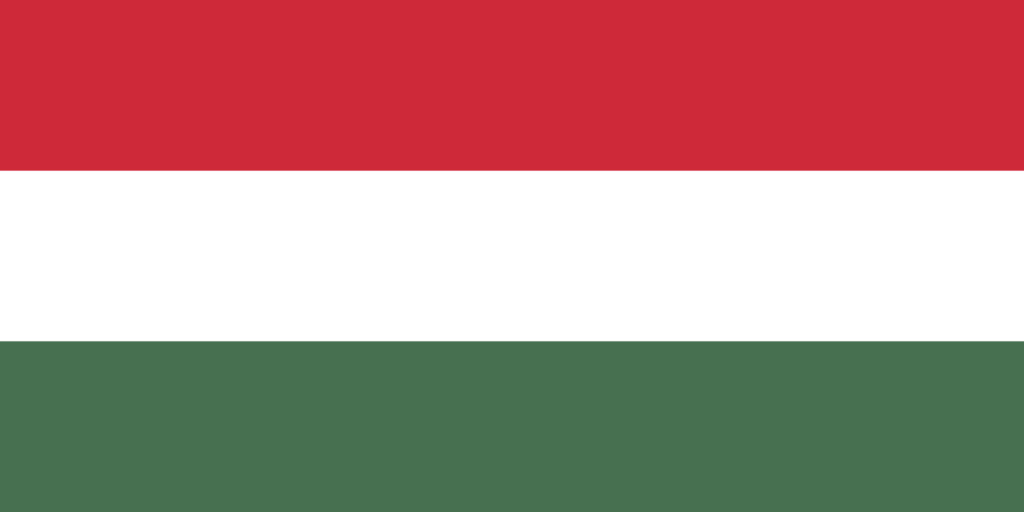
The flag of Hungary is deeply rooted in the nation’s history. This simple yet iconic flag symbolizes Hungary’s heritage, national values, and aspirations, recognized worldwide for its timeless elegance and significance.
Flag of Hungary: Color Palette
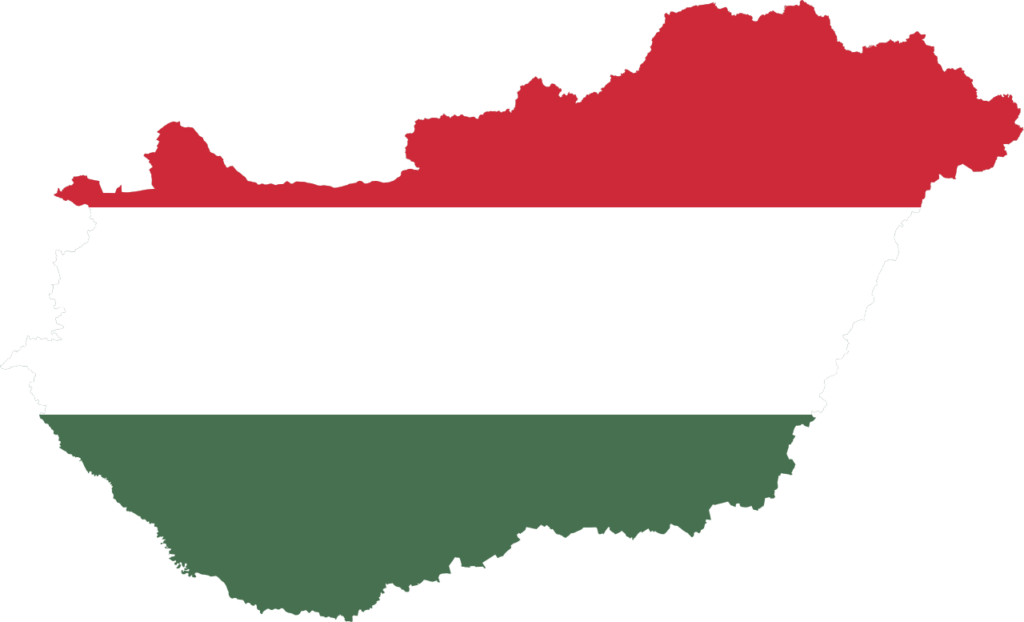
Hungary Flag Emoji: 🇭🇺
The color palette of Hungary’s flag is a carefully chosen red, white, and green trio, each holding a special place in the nation’s culture and narrative. This selection of colors aligns with traditional European heraldry and conveys distinct aspects of Hungary’s identity.
Meaning of Each Color
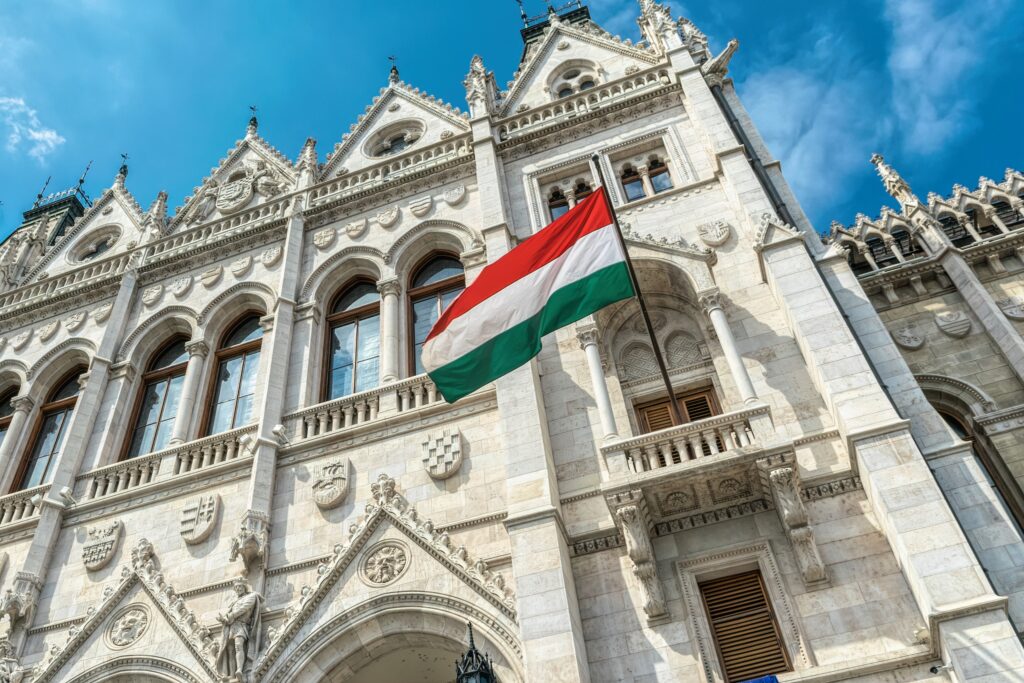
Red
The red stripe in Hungary’s flag symbolizes strength and courage. This color reflects the nation’s determination to fight for freedom and independence, a recurrent theme in Hungary’s tumultuous history.
Red also pays homage to the bloodshed during various battles for independence, marking Hungary’s resilience in the face of oppression and conflict.
White
White in the Hungarian flag stands for faithfulness, honor, and purity. This color embodies Hungary’s commitment to justice, truth, and the principles of righteousness.
White signifies the spiritual and ethical values of the nation, representing the Hungarian people’s dedication to their beliefs and loyalty to each other.
Green
The green stripe represents hope, prosperity, and the country’s rich agricultural heritage. It symbolizes the fertility of the Hungarian land, a cornerstone of the nation’s sustenance and economic prosperity.
Green also signifies the nation’s aspirations for a flourishing future, reflecting Hungary’s optimism and growth-oriented mindset.
Hungarian Coat of Arms
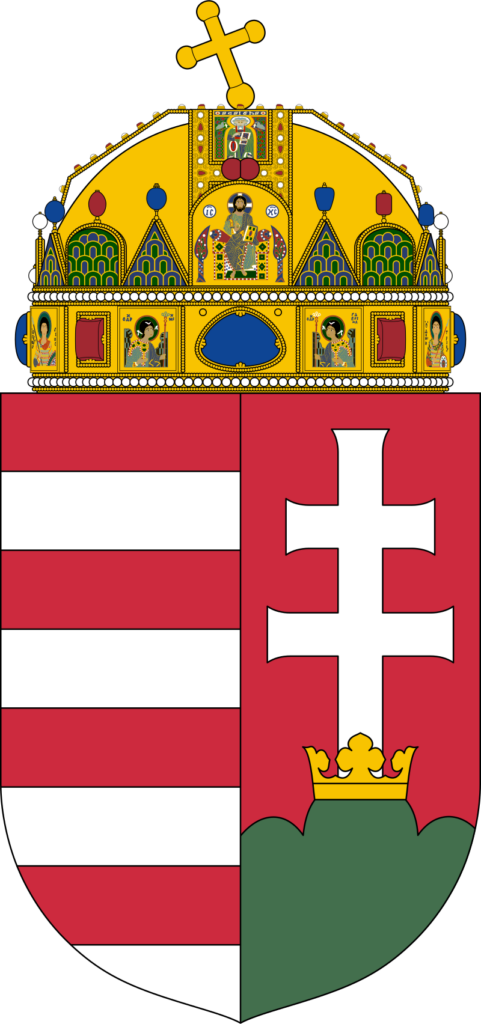
The Hungarian coat of arms is a powerful emblem of the nation’s history and identity. It symbolizes Hungary’s sovereignty, cultural legacy, and the resilience of its people.
As a national emblem, it represents Hungary’s unity and historical journey, reflecting its past and aspirations for the future. This coat of arms is a state symbol and embodiment of the Hungarian spirit.
Historical Evolution and the Meaning Behind Changes
The colors of Hungary’s flag have deep historical roots, evolving alongside the nation’s tumultuous past. Originating from medieval heraldry, these colors have long been associated with Hungary.
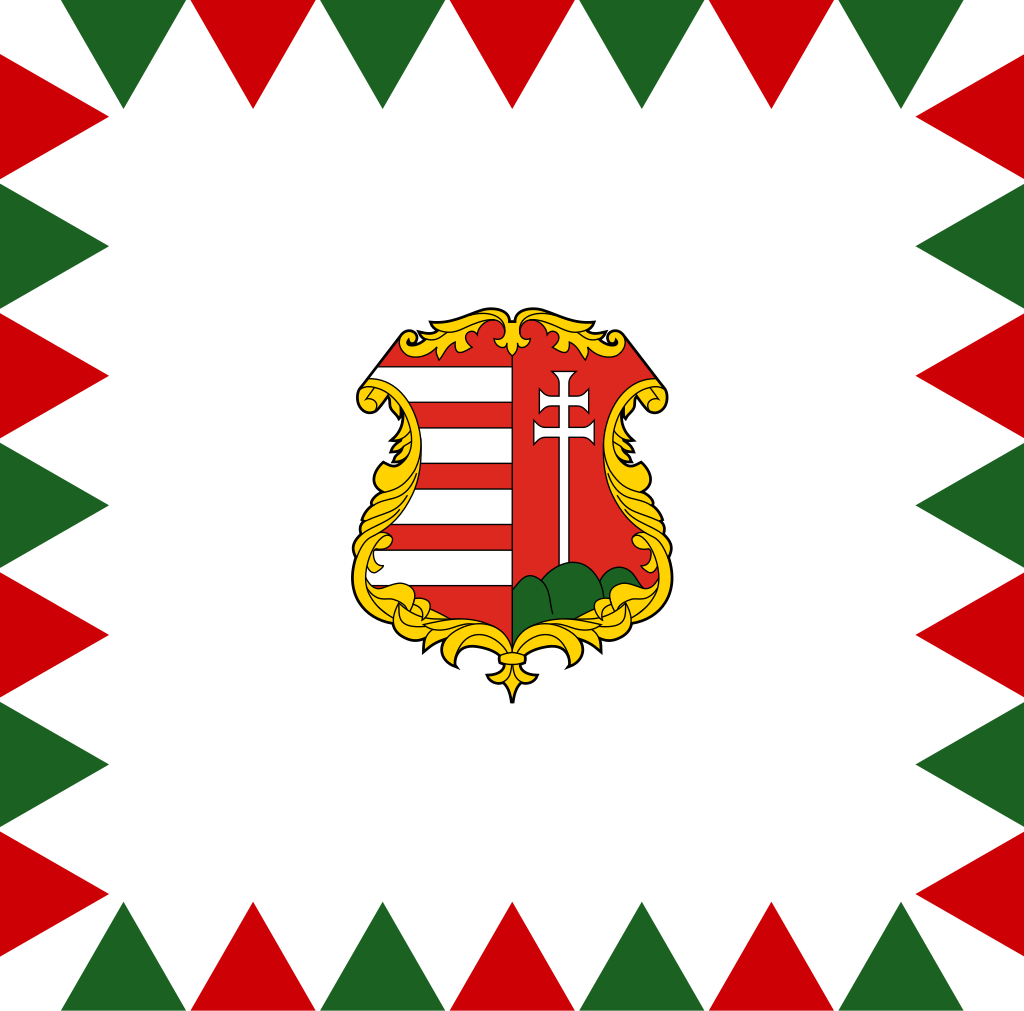
The modern tricolor design was inspired by 19th-century nationalistic movements, particularly the 1848 revolution against Habsburg rule, symbolizing the yearning for independence.
Throughout the 20th century, the flag’s design reflected Hungary’s political landscape. It saw modifications during periods of foreign influence, like the addition of communist symbols during Soviet dominance.
Post-communism, the flag returned to its basic tricolor format, reaffirming the country’s historical values and national identity. This evolution highlights the flag’s role as a dynamic emblem of Hungary’s national identity and sovereignty through various political and social changes.
Overall Symbolic Meaning of the Flag
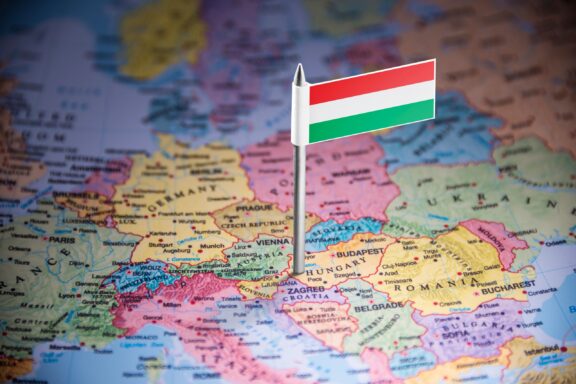
The Hungarian flag embodies the nation’s enduring strength, cultural heritage, and desire for progress through its colors and design. It symbolizes unity and national character, capturing Hungary’s prosperity and collective spirit.
Similar Flags to the Flag of Hungary
Several national flags resemble that of Hungary in design and colors. Let’s explore these flags and understand the parallels.
Italy
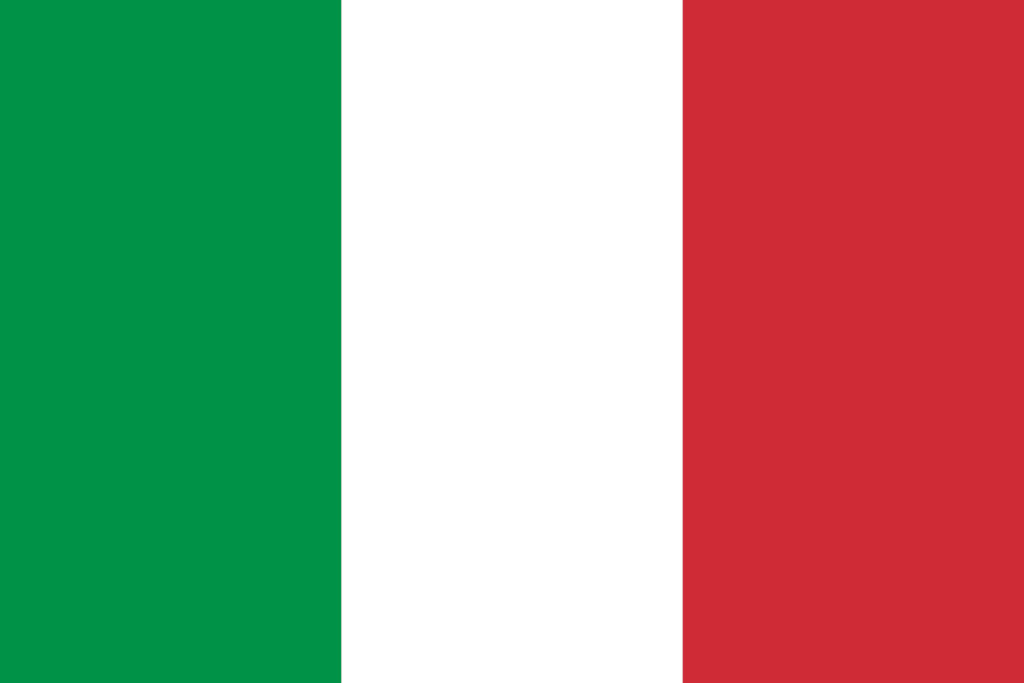
The Italian flag features three vertical green, white, and red stripes. The color scheme is similar to Hungary’s flag, though the stripes’ arrangement and orientation differ. This resemblance is more coincidental than due to shared history or cultural exchanges.
Bulgaria
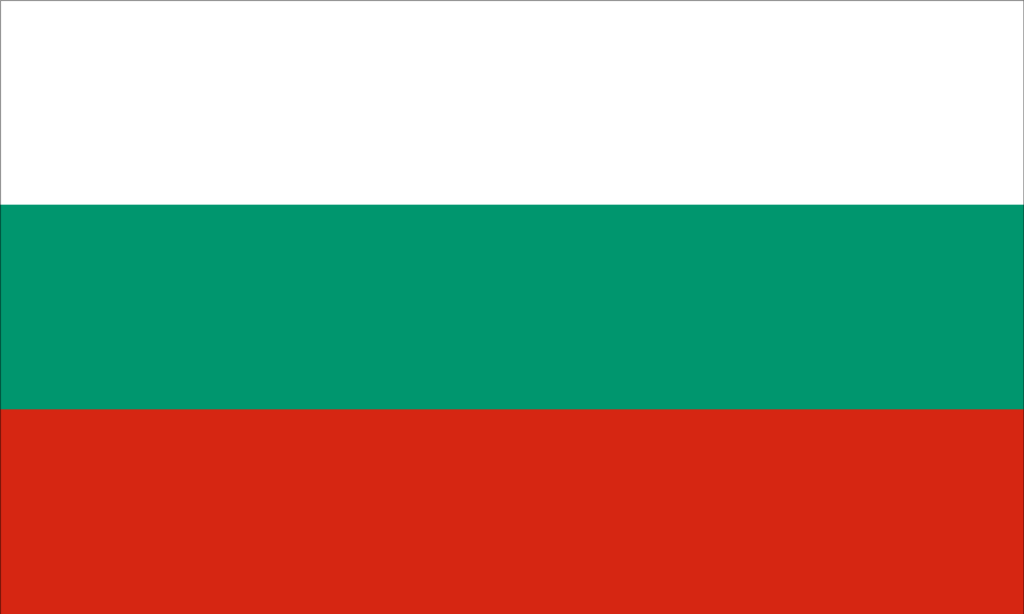
The Bulgarian flag has three horizontal stripes: white, green, and red. The layout is similar to Hungary’s flag, with the difference being the order of the colors.
The resemblance stems from a common practice in the region of using pan-Slavic colors, though each country’s flag has its distinct historical and cultural significance.
Iran
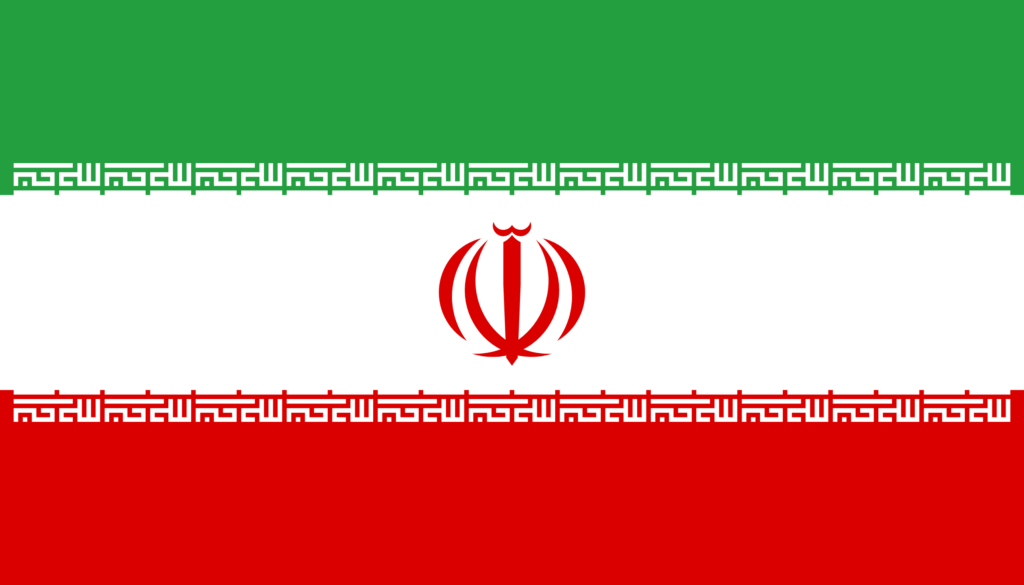
The flag of Iran has horizontal stripes in green, white, and red. While the color scheme is similar to Hungary’s, the meanings and symbols associated with the colors are different, reflecting Iran’s unique cultural and historical context.
The similarity here can be attributed to a convergence in color choices rather than direct historical or cultural links.
Conclusion
The Hungarian flag’s emblematic colors symbolize the nation’s history, culture, and unity. It holds a special place among world flags, representing Hungary’s citizens’ shared identity and pride.
This flag is a national symbol and a reminder of the country’s enduring spirit and collective journey.
Image Sources and Copyright Information
- Hungarian Parliament Building with National Flag: © Konoplytska/Shutterstock
- Hungarian Flag Pin on Map: © BUTENKOV ALEKSEI/Shutterstock